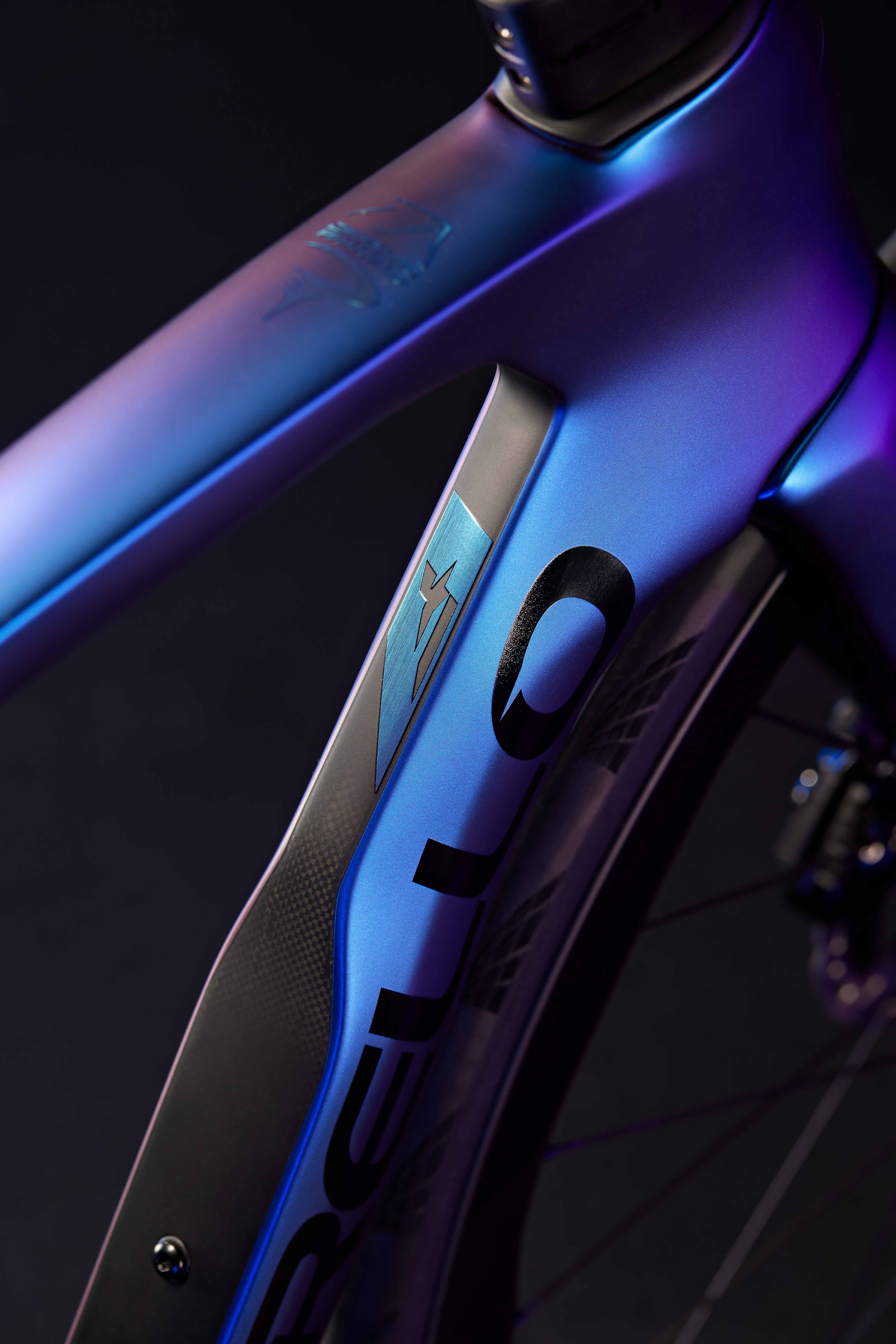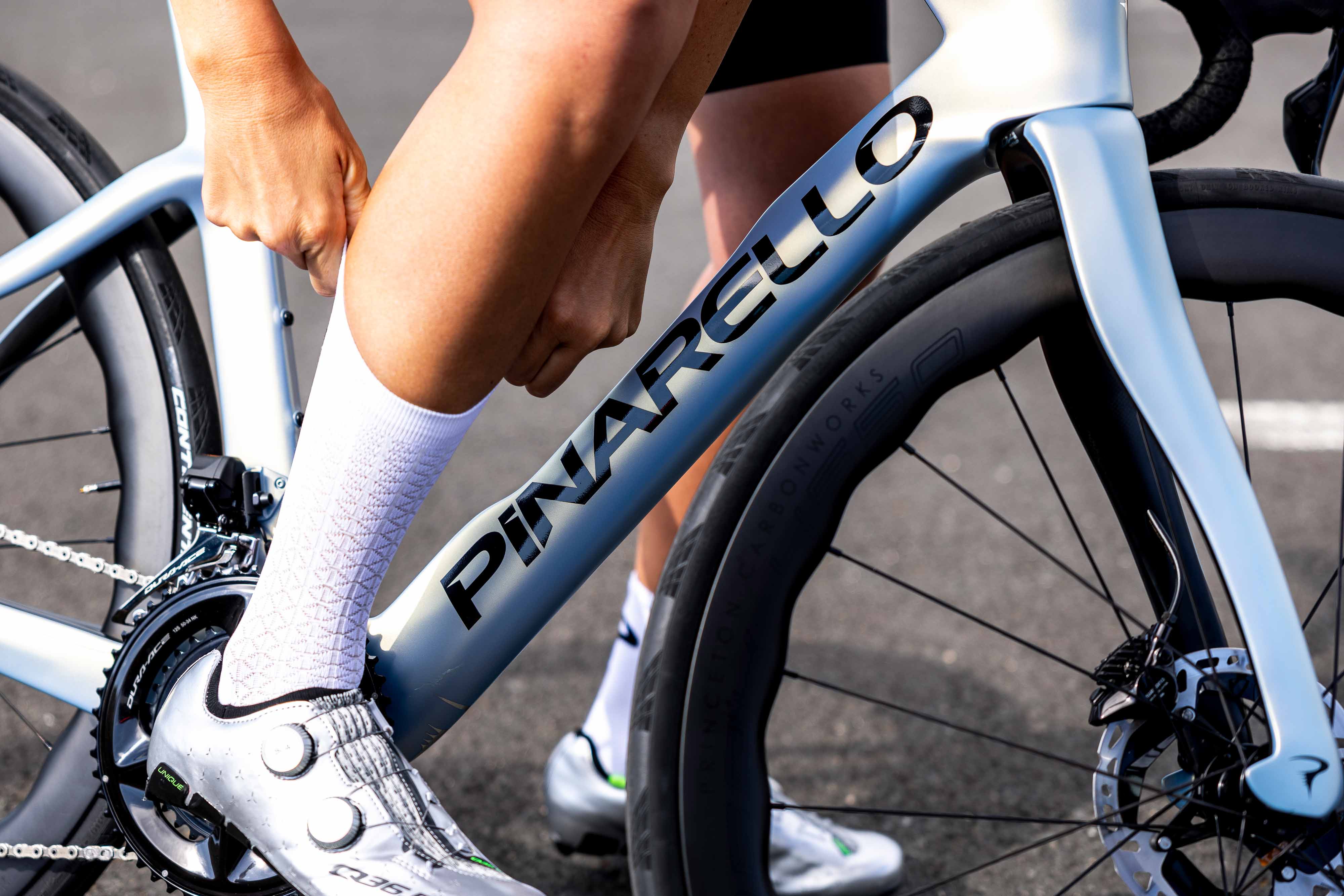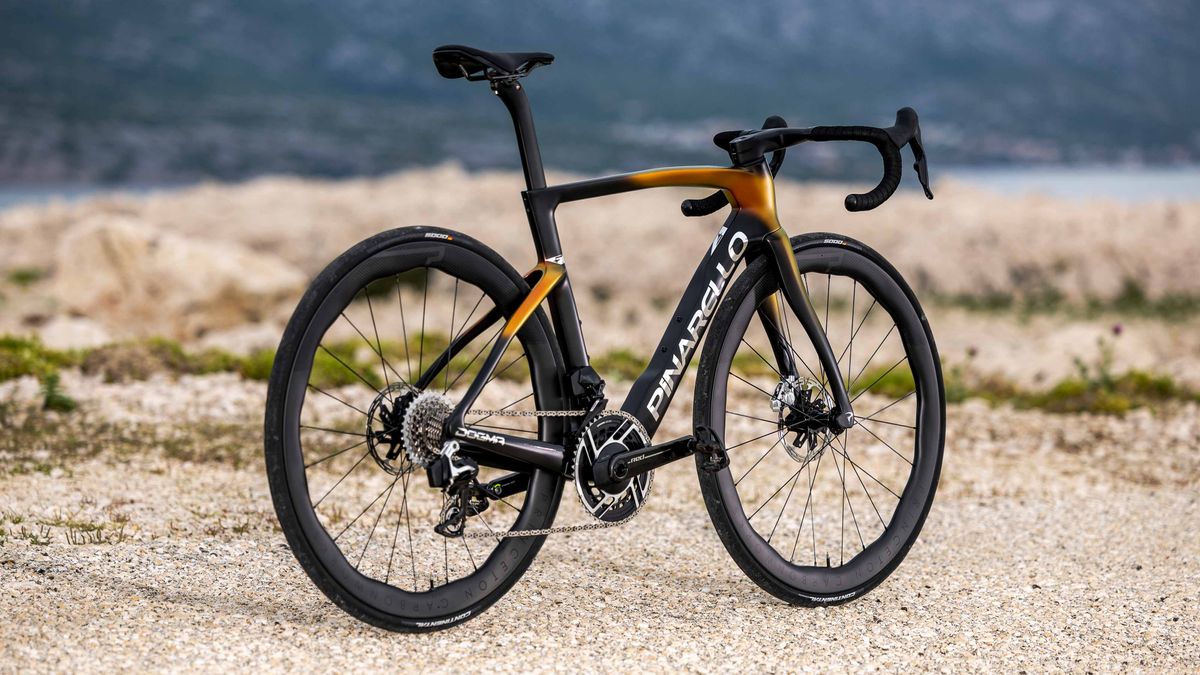The Pinarello Dogma has been a peloton staple for years, and while the Specialized Tarmac rivals it for longevity, few other bikes have become as synonymous with a single team as the Dogma with Team Sky and latterly the Ineos Grenadiers. This is the 13th Dogma since 2005, and has been designed both with and for the nominally British team.
The detail shots that featured in my bumper Dauphiné tech gallery appeared to show pretty marginal changes on the surface, which isn’t a great surprise from a brand that has such a distinctive silhouette for its flagship machine. It’s safe to say the gains are marginal, as is befitting a bike for a team that pioneered marginal gains as a concept, but marginal or not, some interesting things are going on.
Headline figures
For those of you tight on time, the short version of all the text below is that the new Dogma F is 108g lighter, has a new cockpit (which accounts for just under half of the weight savings), an ever so slightly longer wheelbase, 30c tyre clearance, and is only available with top spec groupsets, or as a frameset. Aero gains are there, with a 0.2% improvement in the drag coefficient, but this isn’t a huge improvement in real terms.
For anyone wanting to see how all that translates into ride performance, you’re in luck. Cyclingnews was invited to ride the bike ahead of the launch, my first impressions are penned in my Dogma F first ride review.
New frameset
The heart of any new bike is the frameset, and the Dogma frameset has been fettled and tweaked rather than overhauled. At the front, the headtube has been narrowed by 8mm to reduce the frontal area, facilitated primarily by the introduction of an oval steerer tube that creates space for the brake hoses to run down the front of the head tube rather than the sides as before.
As well as narrower the head tube has been made deeper, though little was made of this addition in the official presentation I was given at the launch.
To match the narrower head tube, the fork legs have also been narrowed in their individual widths, while at the same time being spaced more widely to accept larger tyres – more on this in a second. The downtube has also been narrowed slightly.
The latest race content, interviews, features, reviews and expert buying guides, direct to your inbox!
At the bottom, the bottom bracket has been extended forward to create what Pinarello calls an “aero-keel”. Hidden by the cranks it’s not really something I saw much of in my initial shots, but it’s pretty huge.
Both drive-side dropouts are now blind, which is claimed to aid both aerodynamics and aesthetics. The geometry is in most respects identical to the former model, but the fork has been given a longer rake (up to 47mm from 43mm). This new form geometry had apparently been tested extensively on the old model and was met with Ineos rider approval.
These tweaks, in addition to the new cockpit, have only resulted in a CdA improvement of 0.2%. Brands rarely quote aero improvements in terms of CdA, but in real terms, this would equate to a saving of less than a watt while riding at 40km/h.
Using some slightly convoluted maths, Pinarello has claimed that this CdA improvement is equivalent to an additional 175g in weight savings over the length of a grand tour, ridden by Geraint Thomas.

Tyre clearance
The new Dogma F can now accept 30c tyres, which is rather narrow in terms of recent trends. I put this to Pinarello R&D manager, especially in the context of the trends I saw at Paris-Roubaix with teams running 34c tyres and wider.
The response was indicative of the input Ineos has on the bike. Simply put, allowing wider tyres than 30c would have resulted in a less stiff bottom bracket, and this wasn’t something the team was willing to sacrifice for the sake of one race. We all know there’s always room for a little more than the quoted maximum anyway, and given we saw the team running 32c tyres on the outgoing Dogma F (which has a claimed maximum of 28mm) at Roubaix this year, it’s safe to assume they’ll continue to do the same.

New cockpit
The new Talon Ultra Fast cockpit is measured from the drops, which are flared by 1cm on each side, so at the hoods, a 40cm is effectively a 38cm. The tops are narrower and less bulbous than the older model. This narrowing and slimming makes the cockpit 40g lighter, though it is unclear what the weight savings are if you account for a similar width at the hoods.
The flare is also designed in such a way as to work with the new UCI rules on inwardly turned hoods. Given the oval steerer this is the only cockpit that can be run on the bike, and is available in widths from 34-42cm and stem lengths of 80-140mm.
Weight savings
Nearly half of the 108g saving comes from the cockpit. The remaining 60g saving has come from slimming areas of the frame (head tube and bottom bracket) and also the use of a higher modulus carbon in discrete areas of the layup, primarily around the bottom bracket and chainstays. Higher modulus carbon is stiffer, so you can use less of it to save weight, but it’s more brittle so it can only be used in less intricate areas.

Specs and pricing
The new Dogma F can only be purchased with top end groupsets, unless you go down the frameset route. Dura-Ace, Red, or wireless Super Record are the only options. The wheel options are similarly premium, with Princeton Peak 4550 or DT Swiss ARC 1400 wheels paired with Dura-Ace or Red, and Bora Ultras with the Super Record option.
System weights for a size 53 without pedals and bottles are 6.63kg for Red w/ Princeton wheels, 6.77kg for Dura-Ace w/ Princeton wheels, and 6.88kg for Super Record with Bora WTO wheels.
Prices start at €14,500 / £12,600 / $14,500, and a frameset will set you back €6,700 / £5,500 / $6,950.
A lifeline for rim brakes
To the surprise of nobody, the new Dogma F is a disc brake bike only. What was a surprise was the announcement that Pinarello is going to continue to produce the rim brake version of the old Dogma F.
Yes, it’s a super premium frameset, but credit where it’s due it’s a win for backwards compatibility and while it will likely not sell in as greater volume it will likely be a target for rim brake aficionados, or anyone who’s written off a beloved rim brake frame and has a perfectly useable rim brake groupset and wheels kicking about.

